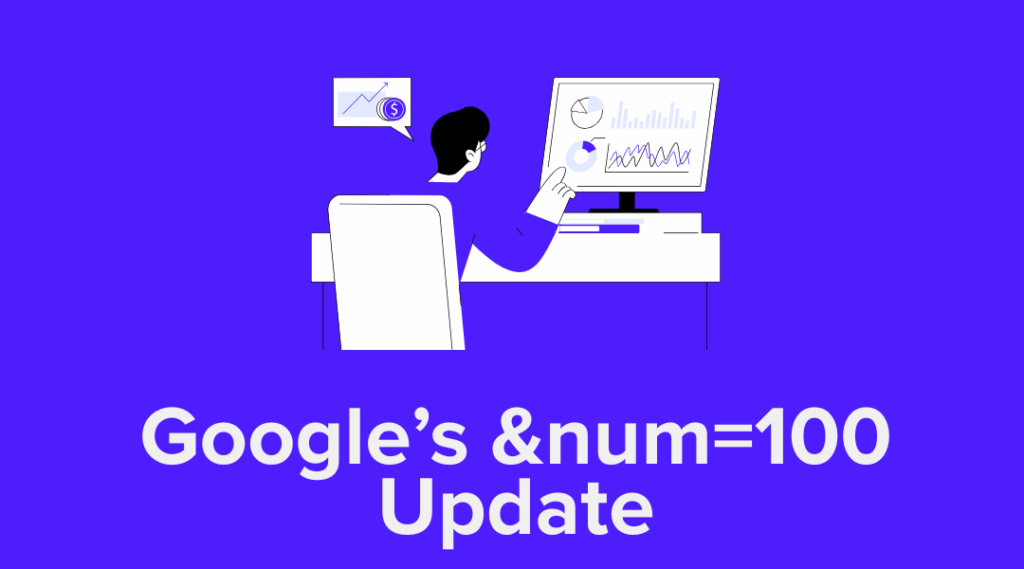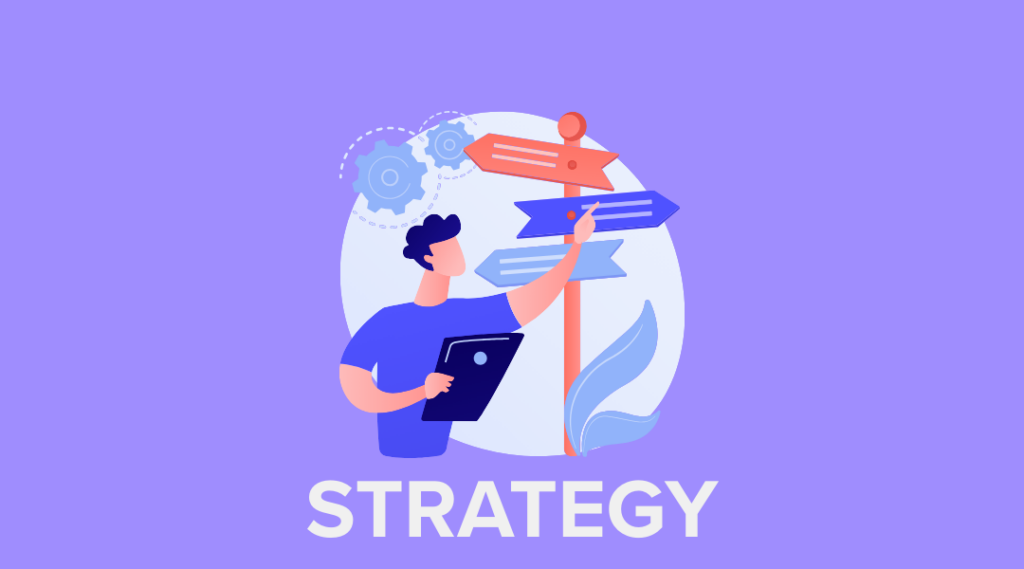Summary:
Content can convert on its own—but pairing SEO with email takes it further. SEO brings in high-intent traffic while email builds trust, drives action, and increases LTV. When you repurpose blog content in email flows and use email insights to guide SEO, you create a loop that fuels discovery, conversion, and retention—without creating more content from scratch.
Many brands treat SEO and email as separate silos—one attracts visitors, the other converts them, and they don’t interact. However, the most successful strategies recognize that organic content and email marketing are stronger together.
When SEO and email work in tandem, your blog becomes more than a ranking asset. It becomes a conversion engine.
Great blog content doesn’t just bring in traffic—it educates, nurtures, and builds trust. When it’s strategically integrated into your email flows, it can drive serious ROI long before (and long after) a post hits page one.
In this article, we’ll explore how to connect your SEO and email marketing strategies, why this matters for both eComm and B2B brands, and how to start making your blog content work harder across the funnel.
Why SEO and email marketing belong together
While channels like paid social and performance marketing tend to get the spotlight—and the lion’s share of budget—SEO and email are often underestimated. They’re not always seen as the “sexy” channels. But the reality? They’re two of the most powerful tools for long-term, sustainable growth. SEO brings in consistent, high-intent traffic. Email nurtures that traffic into loyal, repeat customers. When paired, they create a compounding effect that flashier tactics can’t match.
Let’s break down what each channel brings:
- SEO builds discoverability: It brings new users into your world. People who are actively searching for answers, products, or solutions.
- Email builds conversion and loyalty: Once someone subscribes or purchases, email keeps them engaged, nurtures repeat purchases, and increases LTV.
When you integrate the two:
- You maximize the ROI of content by using it across channels.
- You meet your audience with the right content at the right time.
- You turn SEO from an awareness-only play into a revenue-driving engine.
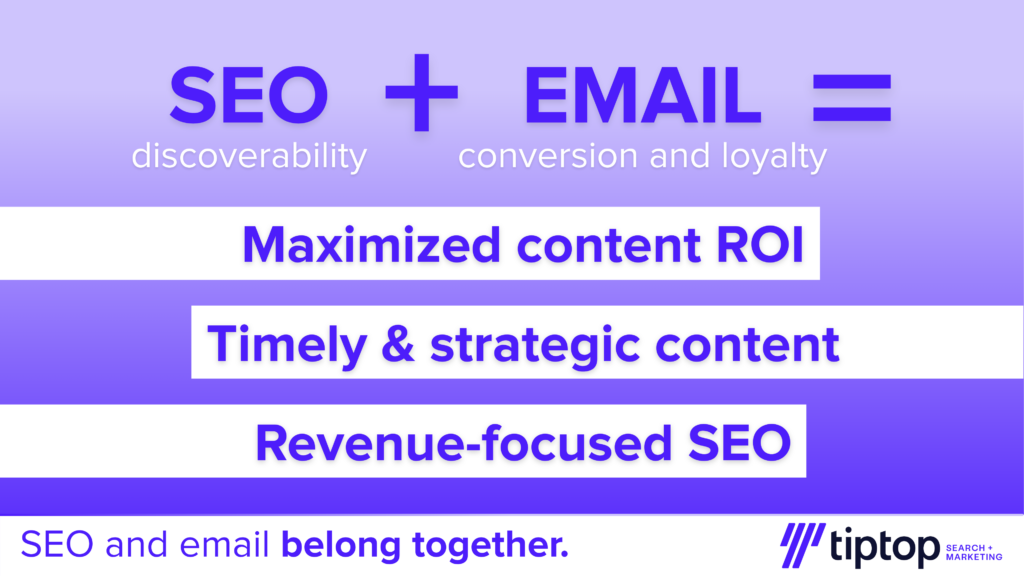
How to use blog content to drive email conversions
Your blog isn’t just a traffic generator—it’s an entry point to long-term brand relationships. When strategically reused in email, blog content becomes one of your most powerful conversion tools.
1. Capture emails with content upgrades
Not all readers are ready to buy, but they may be ready to subscribe. Use your top-performing blog posts to offer:
- A downloadable checklist or PDF version of the article
- A bonus resource (e.g., template, worksheet, guide)
- A mini-course or series that expands on the blog’s topic
These gated offers help grow your email list while keeping lead quality high; they’re opting in because they’re interested in your expertise.
2. Add blog content to welcome series and flows
Once someone subscribes, your welcome sequence is your chance to make an impression. Rather than relying solely on product messaging, include blog content that aligns with their interests:
- Highlight how-to guides that complement their recent page visits
- Introduce blog content that answers common questions or pain points
- Use content to educate and warm users up before a sales pitch
This approach keeps subscribers engaged, builds trust, and increases the chances of future conversions.
3. Expand on blog topics with email-only content
Email is your chance to take the conversation deeper:
- Add founder commentary or team insights to existing blog content
- Share examples or stories not included in the original article
- Connect the blog to a product recommendation or special offer
This creates a richer experience and gives subscribers a reason to revisit your site.
How email amplifies the impact of SEO
Great content shouldn’t just sit around waiting to rank. One of the fastest ways to activate blog content is through your email list. Email lets you put valuable content directly in front of your audience, helping drive engagement and conversions long before search engines catch up.
Drive traffic before rankings kick in
When you include new blog posts in your email sends, you immediately send qualified traffic to those pages. This not only gets more eyes on your content early, but also signals to Google that your content is worth engaging with, boosting your SEO performance over time.
Keep evergreen content working
Your email list is the perfect place to resurface high-performing content, especially seasonal guides or evergreen posts that align with promotions or customer interests. Rather than letting these posts fade after their initial push, email helps bring them back into rotation. You can:
- Tie evergreen blog posts to current product launches
- Build themed campaigns around related posts in a content cluster
- Re-engage segments with interest-specific content
Create a feedback loop between email and SEO
Email engagement can reveal what’s resonating and what isn’t. Use metrics like open rates, click-throughs, and conversions to guide your content strategy:
- High engagement? Consider building more SEO content around those themes.
- Low clicks? Rework the headline, offer more value, or test a different content format.
- Strong conversions from email traffic? Prioritize those blog topics in future planning.
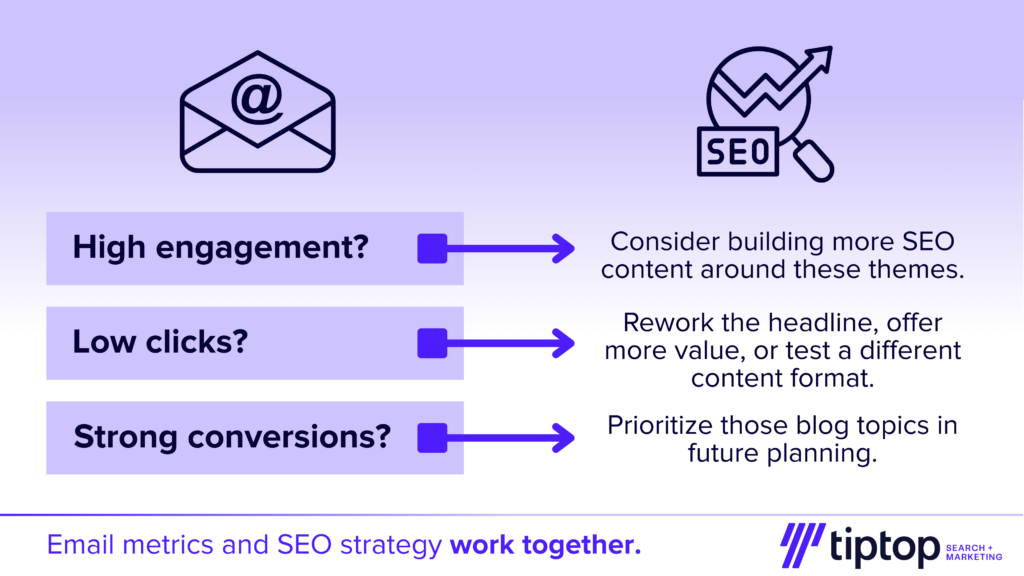
SEO content types that work in email
Not every blog post belongs in an email, but the right content can significantly boost engagement, conversions, and repeat visits. The goal is to select pieces that align with user needs, funnel stage, and buying intent.
Product education content
These posts help bridge the gap between interest and purchase. They’re especially effective in welcome flows, browse abandonment emails, and pre-purchase education.
Example: A blog titled “Stiff vs. Regular Flex: Which Golf Club Shaft is Right For You” can be repurposed into a flex guide email, offering tips, product links, and an invitation to explore the collection.
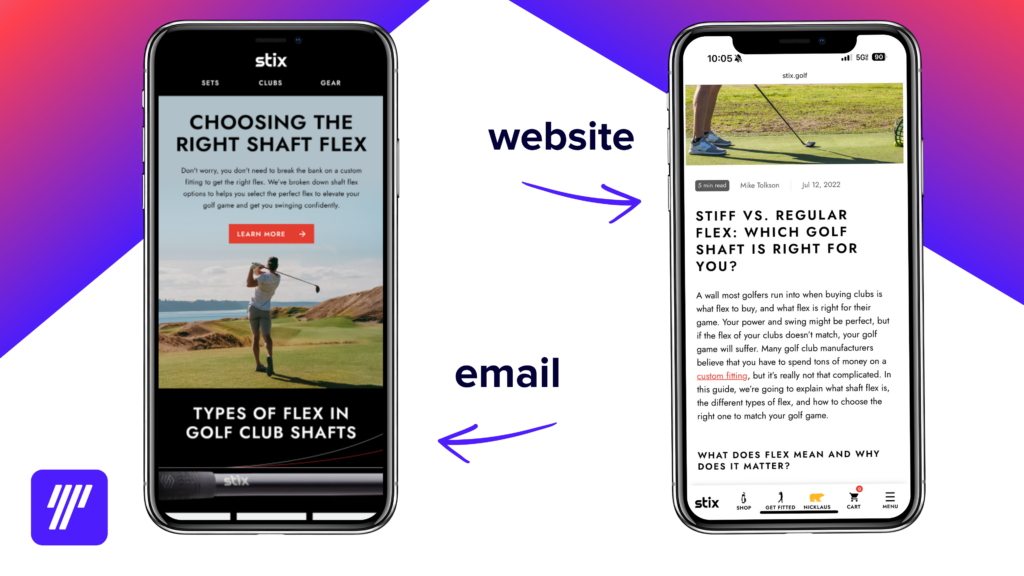
Category or use case guides
When a user is exploring solutions or trying to decide between product types, these posts help position your offering in context. They pair well with promotional emails, seasonal campaigns, or bundles.
Example: “7 Best Supplements for Gut Health” could become a curated round-up in a health-focused campaign with cross-sells and product education baked in.
Thought leadership and brand values
These aren’t just for top-of-funnel awareness; they deepen brand affinity. Use this content in re-engagement flows, founder’s notes, or values-driven storytelling.
Example: A sustainability series on your blog can be translated into an email campaign spotlighting eco-conscious sourcing, behind-the-scenes practices, or mission alignment.
The best-performing content in email isn’t always the most keyword-rich—it’s the content that answers real questions, overcomes objections, and helps users take the next step with confidence.
What happens when SEO and email work together
When you connect the dots between your blog and your email flows, content doesn’t just sit in a silo; it drives measurable results across both acquisition and retention. We’ve seen brands turn high-performing blog posts into conversion tools, nurture sequences, and even revenue-generating campaigns.
To illustrate what this looks like in action, here are a few scenarios that show how SEO content becomes a revenue-driving asset when integrated into email:
1. High-intent content that converts
When a user lands on a post written to solve a specific problem—like choosing a product, understanding a use case, or comparing options—it’s a prime candidate for email reuse. Adding this content to welcome flows or post-purchase education can guide users to their next step.
Example: Replenishables are awesome products for emails. For our coffee D2C having a “How Do You Brew Your Coffee?” link to a content hub as part of their post-purchase automation series is a great way to educate customers on how to brew their coffee. This also leads to better retention. While post-purchase emails don’t often drive a ton of revenue, this flow has a solid click-through rate and again–helps customers feel empowered as they use the product.
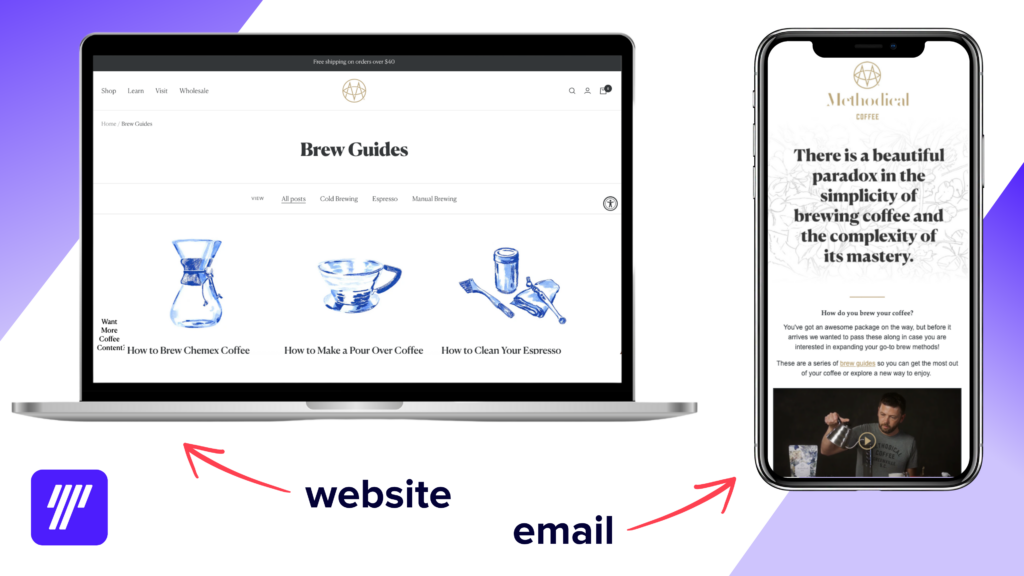
2. Evergreen posts that power lifecycle campaigns
Longer-form blog content (like buyer’s guides or seasonal roundups) can be used throughout the customer journey. Whether it’s part of a win-back flow or a post-purchase email, this content helps reinforce your value.
Example: An equestrian college guide has frequent rotation in email campaigns for one of our equestrian e-commerce clients. When teased in email headlines, this guide gets a 60% open rate and has led to $80K in LTR. This campaign does not just generate high revenue; it has high engagement with customers, who often respond with additional colleges we should consider adding.
3. Niche content that segments and nurtures
If your blog content is organized by role, industry, or use case, you can use it to trigger segmented emails that speak to those audiences. That means better relevance, better engagement, and stronger lead qualification.
Example: A B2B lens technology brand uses a progressive lens troubleshooting guide as part of its flows to nurture leads. These emails typically see a 61% open rate and a 32% click rate. High relevancy equals better engagement, which leads to stronger leads.
How to connect the dots between SEO and email
You’ve got the blog. You’ve got the email platform. But if they’re not working together, you’re leaving conversions on the table. Here’s how to build a content strategy that bridges the two and makes your efforts go further.
1. Audit your blog content for email potential
Start by looking at your blog library through a new lens, not just searching for traffic or keyword rankings, but for usefulness in the buyer journey.
Ask:
- Which posts are evergreen and still relevant?
- Which ones map to high-converting products or services?
- Are there posts that perform well in search but don't convert (and could be repurposed for email)?
Example: A blog post titled “Best Golf Clubs for Beginners” might be driving organic traffic but seeing a drop-off. Bring it into a welcome email, pair it with product bundles, and give it a second life.
2. Identify where content belongs in your flows
Once you've identified useful posts, determine where they fit in your email strategy.
Look at:
- Welcome flows: Can a blog post offer additional education instead of pitching a product immediately?
- Abandoned browse/cart emails: Is there a guide or use case blog that can reinforce the product choice?
- Post-purchase: Can a piece of content help with onboarding or usage?
- Re-engagement: Are there timely or evergreen articles to revive dormant subscribers?
💡 Pro tip: Use email segments based on blog categories or tags to trigger more relevant follow-ups. If someone reads “Best Electrolyte Drinks for Kids,” send them your “Electrolyte Popsicles” recipe to further showcase your product but in a different use case.
3. Repurpose in both directions
It’s not just about putting blog content in emails. Your highest-performing emails might become blog posts too.
Do this by:
- Turning a popular email tip into a longer-form article
- Expanding a product launch email into a comparison blog
- Creating a blog roundup from a themed email series
This keeps both channels aligned—and saves your team from reinventing the wheel.
4. Use shared KPIs to track true performance
The best insights come when SEO and email aren’t judged in isolation.
Start tracking:
- How often blog readers convert through email follow-ups
- Which emails drive traffic back to the blog (and what happens after)
- LTV of users acquired via organic who later convert via email
Example: Use UTM parameters and email tagging to track assisted conversions. Create Looker Studio dashboards that blend SEO + email performance into one narrative.
5. Loop your teams in early
SEO and email are often handled by different people—or even different departments or agencies. Collaboration makes the magic happen.
Try:
- Monthly content syncs between SEO and email stakeholders
- Shared campaign calendars so email can plan around upcoming blog content
- Involving the SEO team in planning automated flows (and vice versa)
Reminder: You’re not just trying to stuff blog links into emails. You’re building a flywheel that fuels discovery, conversion, and retention across every touchpoint.
Your content should do more than rank
SEO brings people in. Email keeps them coming back. Together, they form a loop that turns discovery into action and first-time buyers into loyal customers.
If your blog is only optimized for search, or your emails are only focused on product pushes, you’re missing a huge opportunity. This isn't about adding more to your plate; it’s about making smarter use of the content you already have.
Want to turn your blog into a conversion engine? Let’s talk →
❤️ Big shoutout to our friends at MKTG Rhythm for the email insights, stat-checking, and for helping our clients make their content go further with email.
You might also like:


